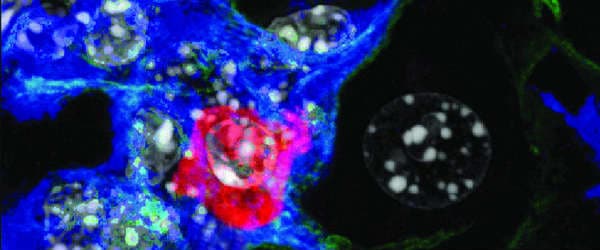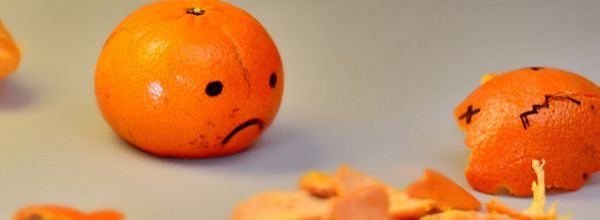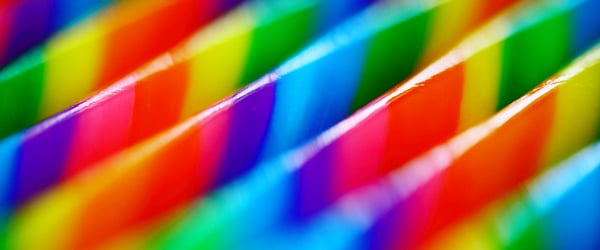So having read our article on how a cytometer works, surely the next question is ‘what’s the right flow cytometer for me?!’
Basic Components of Flow Cytometers
We know that at their most basic level, cytometers are made up of 3 main components:
- A fluidics system to transport and focus the cells past an interrogation point;
- An optics system with excitation optics (lasers) to illuminate the cells, and collection optics (photon detector) to collect all the scattered light and emitted fluorescence from the cells (or particles etc.); and
- An electronics system to convert the light to electrical, and then digital, signals.
So, what are the considerations when selecting a flow cytometer? What makes the variety of instruments different from each other?
At this stage it should go without saying (hopefully!) that you need to ensure the cytometer you’re using is equipped with the appropriate lasers and detectors for your fluorochromes. Hence, for example, it doesn’t matter how many fingers you’ve crossed, if you’re trying to view allophycocyanin (APC) expression and you don’t have a red laser, it aint gonna happen!
All instruments mentioned below have many similarities; they all measure forward and side scatter as standard, they all format their data as .fcs (Flow Cytometry Standard) files, they all include at least a blue (488nm) laser, among other commonalities. However, the number of lasers and detectors in a system frequently varies from cytometer to cytometer (and incidentally drives up their cost), as well as sensitivity, speed, absolute counting capability, and a few other factors. Also, some cytometers will have carousels or plate loaders (either standard or optional extras) which may free up the time actually spent on the instrument.
Software systems differ between the multitude of instruments, and while many flow cytometers from the same company run the same system, this is not always the case and care should be taken if running parallel experiments on two instruments as they may collect and process the data differently. Most software programs have similar features, including some form of data analysis software, workflow template and automated compensation etc. One or more copies of the software may be provided with the instrument so that data analysis can be performed off-line.
It helps to have an idea of what distinguishes the main instruments from each other, as well as noting their commonalities.
Disclaimer ahead!!
For the sake of brevity through this article, let’s overlook cell sorters and focus on “classical” cytometer analyzers. Furthermore, this article doesn’t serve as a comprehensive list of features for every analyzer, but is simply a snapshot overview for many of the most common instruments currently available. Take it as a given that all cytometers listed also measure forward and side scatter. They’re alphabetically listed, and I will endeavor to be as impartial and objective as possible (famous last words!).
The largest manufacturers of flow cytometers are Beckman Coulter and Becton Dickinson; however several other companies (Life Technologies, Miltenyi, Merck Millipore, Partec and Sony Biotechnology/iCyt) also produce cytometers.
Beckman Coulter
CyAn ADP has extremely fast electronics with a small footprint (and a fluidics cart), and generally comes as a 7 color/ 2 laser (blue, red) or 9 color/ 3 laser (blue, red, violet) system. The violet laser can be substituted for a UV or green laser.
FC 500 comes as a single (blue)or dual (blue, red) laser system with 5 colors available , for research or clinical use, and may be thought of as a former version of the Gallios/Navios analyzers.
Gallios is a research cytometer that comes in 3 different set ups: 6 color/ 2 laser (blue, red), 8 color/ 2 laser (blue, red), 10 color/ 3 laser (blue, red, violet). Additionally, a 561nm (yellow) laser can be added to any of these configurations.
Navios is essentially the clinical version of the Gallios, so is IVD approved with a few other features.
|
Laser |
Parameter |
Loader Options |
Software | |
| CyAn ADP |
2 (blue, red) 3( blue, red, violet*) |
7 x fluorescence 9 x fluorescence |
HyperCyt loader |
Summit |
| FC 500 |
1 (Blue) 2 (Blue, Red) |
5 x fluorescence
|
Carousel Plate loader |
CXP |
| Gallios |
2 (blue, red) 3 (blue, red, violet)** |
6/8 x fluorescence 10 x fluorescence |
Carousel as standard
|
Gallios |
| Navios |
2 (blue, red) 3 (blue, red, violet)** |
6/8 x fluorescence 10 x fluorescence |
Carousel as standard
|
Navios |
Table 1. Beckman Coulter Flow Cytometers (* The violet laser can be substituted by a UV or green laser. ** A yellow laser can be added to any of these configurations. )
Becton Dickinson
Accuri C6 is a small, easy to use, bench top analyzer, and has a 2 laser (blue, red), 4 color detection system.
FACSCalibur II is a stalwart workhorse in the clinical and research lab with a 3 color, 1 laser (blue) system, or 4 color 2 laser (blue, red) system.
FACSCanto II is a clinical, as well as research, instrument with many automated controls, and generally comes as a 3 laser (blue, red, violet), 8 color instrument.
FACSVerse is a new research instrument which includes a universal loader, and has 1 laser (blue), 4 color, 2 laser (blue, red), 6 color, and 3 laser (blue, red, violet) 8 color options.
LSRFortessa is a large, configurable, research analyzer, with by far the largest footprint (though smaller than its predecessor, the LSR II), and allows up to an 18 color, 4 laser configuration. Also with the SORP (Special Order Research Product) options it may be tailored to individual specs regarding laser, filter, and detector conformation.
|
Laser |
Parameter |
Loader Options |
Software | |
| Accuri C6 |
2 (blue, red) |
4 x fluorescence |
BD CSampler |
Accuri C6 |
| FACSCalibur II |
1 (blue) 2 (blue, red) |
3 x fluorescence 4 x fluorescence |
Carousel Plate loader |
CellQuest Pro |
| FACSCanto II |
2 (blue, red) 3 (blue, red, violet) |
6 x fluorescence 8 x fluorescence |
Carousel Plate loader |
FACSDiva |
| FACSVerse |
1 (blue) 2 (blue, red) 3 (blue, red, violet) |
4 x fluorescence 6 x fluorescence 8 x fluorescence |
Universal loader |
FACSuite |
| LSRFortessa |
4 (blue, red, violet & UV)* |
Up to 18 x fluorescence |
Carousel Plate loader |
FACSDiva |
Table 2. Becton Dickinson Flow Cytometers (* Combinations of up to 4 lasers- Green, yellow available also.)
Life Technologies
Attune cytometers come as a 2 laser (blue, red or blue, violet) system, with a high-throughput autosampler for different plate types, and has absolute counting as standard. Attune cytometers use ultrasonic waves rather than hydrodynamic focusing to position cells into the center of the stream.
|
Laser |
Parameter |
Loader Options |
Software | |
| Attune |
2 (blue, red) 2 (blue, violet) |
6 x fluorescence |
Autosampler |
Attune |
Table 3. Basic Specifications of the Attune Cytometer from Life Technologies
Merck Millipore
Guava easyCyte comes as a very compact bench top cytometer with an option of an automated 96 well plate reader. This cytometer in single (blue) laser or dual laser (blue, red) formats, with up to 6 fluorescence parameters available.
|
Laser |
Parameter |
Loader Options |
Software | |
| Guava easyCyte |
1 (blue) 2 (blue, red) |
3 x fluorescence 4 x fluorescence 4 x fluorescence 6 x fluorescence |
Plate loader |
InCyte |
Table 4. Basic Specifications of the Guava easyCyte Flow Cytometer from Merck Millipore
Miltenyi
MACSQuant VYB comes equipped with 3 lasers (blue, yellow, violet) and 8 color parameters. Interestingly this cytometer has a yellow (561nm) laser where other competitors might have installed a red laser. 561nm lasers give optimal excitation of the phycoerythrin (PE) fluorochomes, and some fluorescent proteins (e.g. mCherry, dsRed etc.)
|
Laser |
Parameter |
Loader Options |
Software | |
| MACSQuant VYB |
3 (blue, yellow, violet) |
8 x fluorescence |
MACS MiniSampler |
MACSQuantify |
Table 5. Basic Specifications of the MACSQuant VYB Flow Cytometer from Miltenyi
Partec
CyFlow systems come in different shapes and sizes, with most having a sorting option. Indeed some even come in portable versions for those of us who like to perform cytometry on the move! All have absolute counts as standard. Some instruments come as fixed assay analyzers, including one for use in wine production!
|
Laser |
Parameter |
Loader Options |
Software | |
| CyFlow Space |
Up to 5 (blue, red, violet, UV, yellow, green) |
Up to 16 x fluorescence |
RobbyWell plate loader |
Partec FloMax |
| CyFlow SL |
1 (blue) |
3 x fluorescence
|
– |
Partec FloMax |
| CyFlow Cube 8 |
Up to 3 (blue, red, violet, UV, green, yellow, 375nm, 594nm, 785nm) |
6 x fluorescence |
CyFlow Robby Autoloader |
Partec CyView |
| CyFlow Cube 6 |
2 (blue, red) |
4 x fluorescence |
CyFlow Robby Autoloader |
Partec CyView |
Table 6. CyFlow Cytometer Specifications from Partec
Sony Biotechnology/ iCyt:
ec800 is available in one to four laser (blue, red, violet, green) options, and up to six colors. This cytometer presents with a small footprint and an autoloader that can load a multitude of different plates and tubes. The ec800 can also perform accurate sizing and absolute cell counts.
SP6800 is a cell analysis instrument which detects full spectrum fluorescence (a bit different to other analyzers) and so enables the analysis of the spectral emissions of virtually any overlapped fluorophores. This approach eliminates the need for spectral compensation.
|
Laser |
Parameter |
Loader Options |
Software | |
| ec800 |
1 to 4 (blue, red, violet, green) |
4-6 x fluorescence |
Autoloader |
ec800 |
| SP6800 * |
TBA |
32 x detector ** |
Autoloader |
TBA |
Table 7. Flow Cytometers from Sony Biotechnology/iCyt (* At prototype stage. ** This system does not use optical features.)
So hopefully all this gives you a little look into the instrumentation vista. Remember for the purpose of this article we’ve omitted sorters, image cytometers, microbiology cytometers, and fixed assay analyzers amongst others, but you can be sure they’ll be covered in other BiteSize Bio blogs to follow- so stay tuned!







